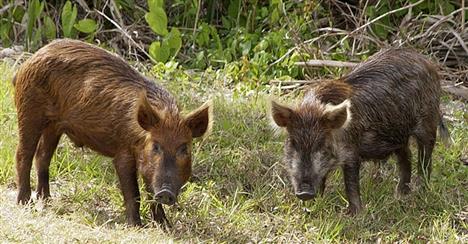Feral Hog Eradication Task Force launches reporting system, outreach campaign
by July 2, 2018 6:08 pm 750 views

An anonymous reporting system has also been established to help measure feral hog removal efforts taking place in Arkansas and to help better estimate the state’s feral hog population, according to the Arkansas Agriculture Department.
The reporting forms are available to report wild hogs killed, here, or wild hogs sighted, here, and can be completed within minutes whenever feral hogs are removed or seen within the state.
It is estimated that feral hogs are now in every county in Arkansas. The Arkansas Feral Hog Eradication Task Force was established by the Arkansas General Assembly in 2017 for the purpose of creating a plan for the eradication of feral hogs in Arkansas. Task force members include a broad range of stakeholders that have an interest in eradicating feral hogs.
“Eradication of feral hogs in Arkansas will require the hard work of a broad range of stakeholders and the Arkansas Feral Hog Eradication Task Force has been working diligently over the past year to address problems and find solutions for the growing threat that feral hogs pose to our state,” said Arkansas Agriculture Secretary and Task Force Chairman Wes Ward.
Task force members and partners are also in the process of signing a Memorandum of Understanding (MOU) to ensure that eradication efforts continue.
A feral hog eradication awareness campaign is planned in the coming months, to include fact sheets and resources specific to different groups of landowners affected by the feral hog problem, according to AAD. A feral hog control handbook will be completed in the coming months and will provide information about feral hogs, assistance programs, regulations, contact information for hunters and trappers, and other resources to help landowners control hogs on private land, according to AAD.
The creatures have an estimated total national population between four and five million in 39 states. It is estimated feral hogs cause $1.5 billion annually in agricultural and ecological damage, according to the U.S. Department of Agriculture.
Feral hogs are not native to the United States. They are an invasive species, a public nuisance and a threat to Arkansas, according to the Arkansas Game and Fish Commission. They compete for food resources, destroy habitat by rooting and wallowing and will eat ground-nesting birds, eggs, fawns and young domestic livestock.
They also carry up to 45 bacteria, diseases and parasites, including Trichinellosis, Brucellosis and swine herpes virus.
Hunting and shooting feral hogs has been implemented for the last few decades. It can chase feral hogs away from crops or food plots temporarily, but they return or become a problem for a neighboring landowner. Studies show at least 66% of a hog population must be removed each year just to prevent it from growing. Hunting has shown to reduce hog populations by up to 50%.
